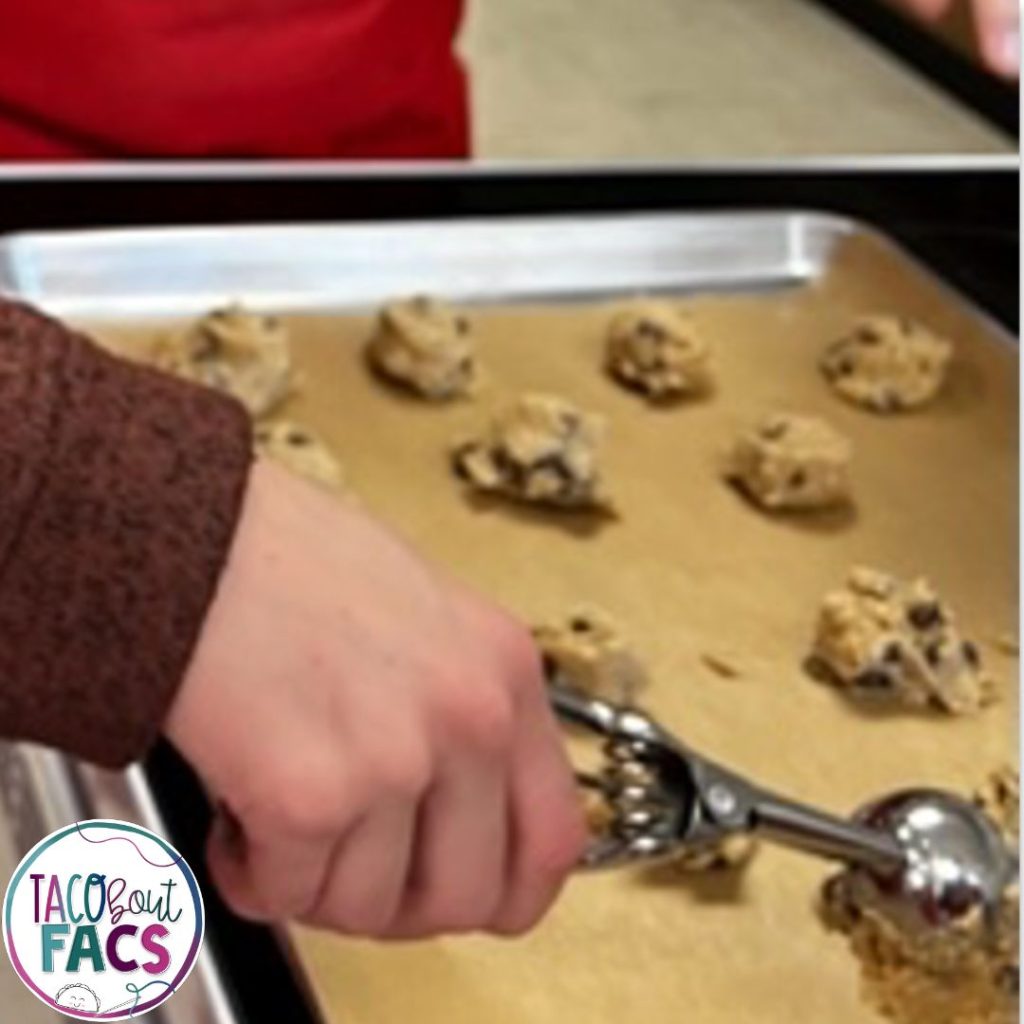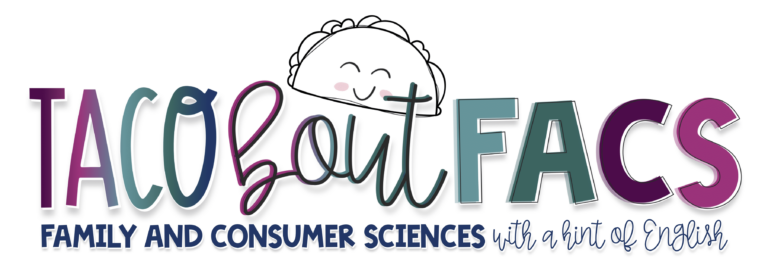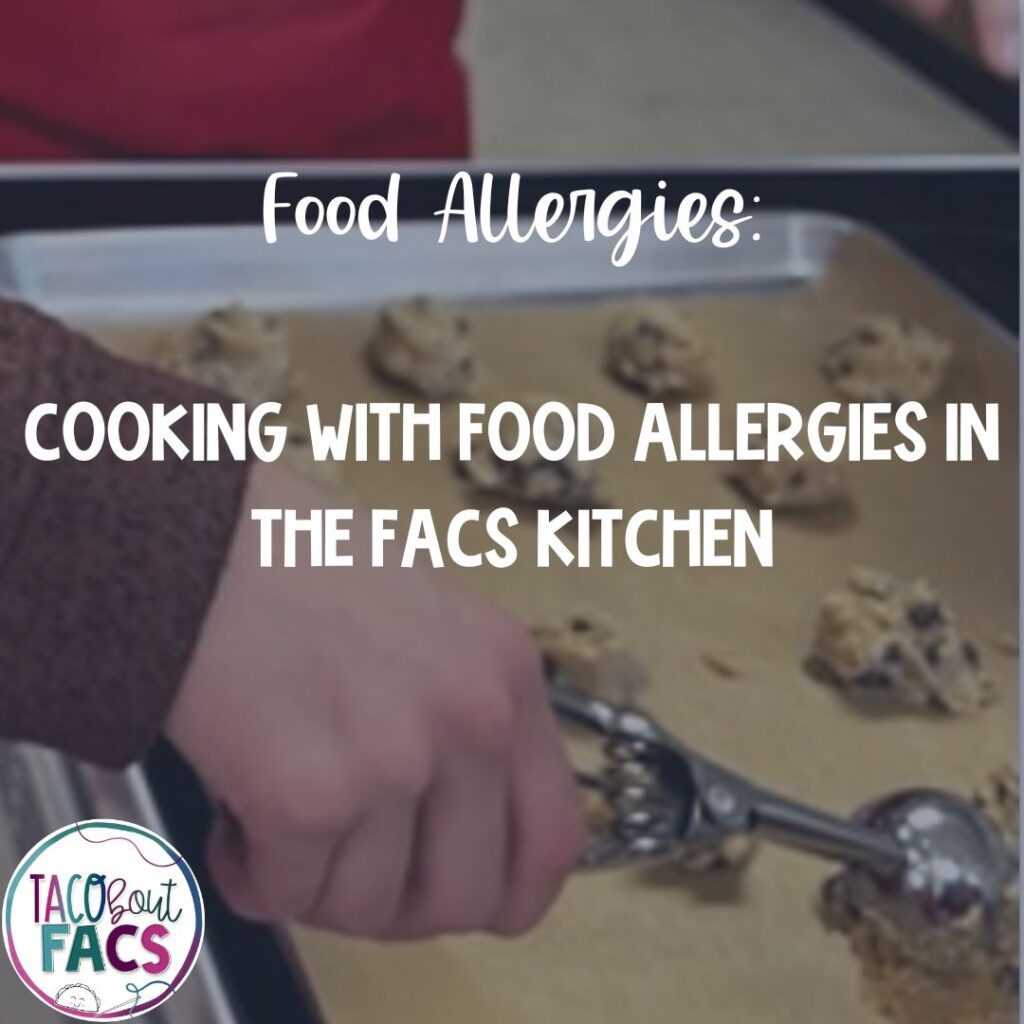Food allergies are becoming more and more common among our students. Some restaurants are now noting allergens and preferences on the menu. And overall, food allergies are becoming easier to accommodate. The question then presents itself in the Family and Consumer Science classrooms, should teachers accommodate allergies in cooking labs?
My why
I have been gluten-free for over six years. Over the last six years, I have learned a lot about cross-contact, finding restaurants that are safe to eat, watching untrained employees almost ruin my food, and having to send food back to be remade. It’s annoying and it is embarrassing. It can also be a hassle trying to find someplace to eat.
This made it even more meaningful for me to teach my students about food allergies. I am not the only gluten-free teacher in my building and I have had students with all sorts of food allergies. As long as the allergy is not too severe, and I can keep the student safe, I think it is worth the extra money and effort to make sure all students realize the importance of understanding how to safely prepare food in the kitchen with various allergies.
Common allergens
One of the first steps that FCS teachers should take is to familiarize themselves with common food allergies and their symptoms. Common allergens include peanuts, tree nuts, dairy, eggs, soy, wheat, fish, and shellfish. Teachers should also be aware of the severity of an allergic reaction, which can range from mild symptoms such as hives and itching to more severe symptoms such as difficulty breathing and anaphylaxis, which can be life-threatening.
Contacting the parents is always wise to run through the list of food labs especially if you’re unsure of the severity of the allergy. Some allergies are far too severe to safely make accommodations.

Teaching about food allergies
According to FARE, 1 in 13 children have food allergies.
It’s likely you already teach about cross-contamination, but I would also encourage teaching about cross-contact. It is important for our students without allergies to realize how easily an allergen can be transferred and cause symptoms. It is also likely students will work in the food industry in some way in their lifetime and customers will likely have food allergies.
Teaching students about washing hands, changing gloves, washing utensils, and adding a barrier to an allergy-friendly meal is vital. Above all, apologizing if necessary and starting over if a mistake a made.
A valuable and free resource is Fare, which includes a lot of educator-friendly material. On this site, you can find free printables. A great teaching resource teaches various ways cross-contact happens and ways to prevent it.
Gluten-free, dairy-free, and more
I feel more passionate about teaching my students about allergies with my own food allergy. I also have them make Gluten Free cookies in an effort to help them realize it can be done and tasty at that! One student has a dairy allergy and could easily be accommodated with dairy-free cheese for tacos, grilled cheese, and zucchini pizza bites.
Gluten-free teachers were served grilled cheese on gluten-free bread. Those guest judge sandwiches were prepared first and served/delivered before students prepared their own grilled cheese sandwiches.
A student with a peanut allergy used Gluten Free cookies.
Logistics
One thing I teach my students is that when a friend has a food allergy and making food for them or working in the food industry when a customer states a food allergy, they can determine if the allergy is “severe enough” to take it seriously. They must be knowledgeable for the safety of the other person.
In the classroom, we learn about and discuss food allergies. In preparation for the cooking lab, we talk about ingredients to watch out for and the accommodations we will make in the classroom.
Is it a little more pricy? Yes, but not enough so as to have students with allergies not be able to eat the final product. It’s also not too expensive to make sure more people are aware of proper food-handling practices for those with allergies.
If you haven’t tried to accommodate food allergies in your FCS classroom, I’d encourage you to start small and give it a try! Even swapping one recipe to make sure it meets students’ dietary needs can make a huge difference.

